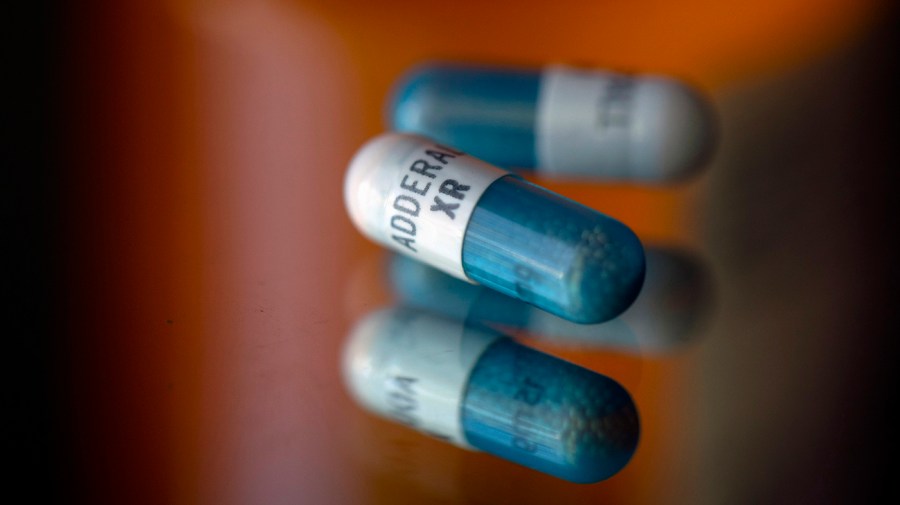Ongoing drug shortages are forcing increased scrutiny around the power of federal regulators in supply chain management.
Key drugs currently in shortage include cancer medications like cisplatin and carboplatin; a form of the common antibiotic amoxicillin; diabetes treatments like Ozempic, Mounjaro and Trulicity; as well as the common ADHD medication Adderall.
Democrats and Republicans have debated how to best resolve the disruptions underlying these shortages. One key proposal would require manufacturers to notify the Food and Drug Administration (FDA) when they experience six consecutive weeks of an increase in product demand, so the agency can better predict shortages.
When House lawmakers negotiated the reauthorization of the Pandemic and All-Hazards Preparedness Act (PAHPA) in July, Democrats sought to add permanent expansions to the FDA’s authority over manufacturers.
Republicans on the Energy and Commerce Subcommittee on Health pushed back, with Rep. Cathy McMorris Rodgers (R-Wash.) saying the ongoing supply chain issue “demands more attention than rushing a few broad FDA bills through committee.”
FDA Commissioner Robert Califf specifically requested the expanded authority in a House hearing in May, saying it would help “prevent or mitigate shortages.”
While the FDA requires manufacturers to alert the agency of “changes in the production” for certain products — which Califf said has helped prevent more than 200 supply chain disruptions in the past year — it currently lacks the ability to demand notification when surges in demand arise.
The amendments were ultimately left out of the PAHPA draft that was advanced out of committee. Congress left for its August recess before the bill to reauthorize PAHPA was passed in either the House or Senate.
FDA leadership has also said that fixing the broader drug supply chain problems will require more than new government powers.
Califf, recently speaking on the spate of shortages during a discussion with the Alliance for a Stronger FDA, lamented he “did not come back to FDA to spend all my time on supply chain, but that’s what’s happened.”
“There’s a lot we can do to plug the hole when a shortage occurs and we’re getting better and better at that. But the fundamental problem is that we have two drug industries in the U.S.,” Califf said, describing the “innovator” and “generic” drug industries.
While applauding legislation incentivizing generic medications to combat high drug prices, Califf said the market needed “modification” in order to become sustainable.
“What we are focused on within the FDA is plugging the holes, and we’re plugging over 200 holes a year now on the drug side, and I don’t think that’s good for society,” the two-time FDA commissioner said. “It’s a big risk that we’re taking, and I think it’s a national security risk.”
Marta Wosińska, health economist and senior scholar at the Brookings Schaeffer Initiative on Health Policy, said Califf is well qualified to take on the problem, having served with him on the Committee on Security of America’s Medical Supply Chain under the National Academies of Sciences, Engineering, and Medicine.
Wosińska told The Hill that the U.S. is “paying a price” for its successful generic medication framework, which places a “tremendous” degree of downward pressure on manufacturers to sell at lower prices.
Generic drug manufacturers work on razor-thin margins that disincentivize investment in facilities and result in lowered quality control and very few manufacturers of certain drugs. In a 2013 paper co-authored with FDA Principal Deputy Commissioner Janet Woodcock, Wosińska found the core problem of ongoing shortages is the “inability of the market to observe and reward quality.”
“FDA cannot solve this problem alone,” Wosińska said. “For one, FDA is not in these facilities at all times. Think of it as like, you know, if you do know that there is a speed camera, you’re going to slow down, right? That’s like [having the] FDA in your facility at all times and that’s not the case.”
Generic sterile injectable drugs for cancer — such as cisplatin and carboplatin — are especially impacted by shortages as there is significantly less room for error in making these products.
Hospitals, where sterile injectable drugs are more likely to be administered, are one source of the downward pressure as they play drug sellers off one another in order to get the lowest price, and they often end up sourcing from unreliable manufacturers.
In a report published earlier this year with Richard Frank, also a senior fellow at the Brookings Schaeffer Initiative on Health Policy, Wosińska put forth three policies to address persistent drug shortages.
Among these policies was a proposed mechanism to encourage hospitals to work with “vendors that are less likely to experience production disruptions.” This program would be established through Centers for Medicare and Medicaid Services, which has long operated similar pay-for-performance programs in other health fields.
Another proposal by Wosińska and Frank involved the Department of Health and Human Services offering $2 billion in targeted low-interest loans for manufacturers to invest in “facility upgrades or expansion.”
“This aims to address the existing financing barriers related to the low profitability of such [generic sterile injectable] facilities,” they wrote.
But health care groups still see a crucial role for the FDA in combating drug shortages and have called for the agency to be afforded more authority in order to prevent scarcities before they occur.
Earlier this month, the American Hospital Association (AHA) endorsed the Drug Shortage Prevention Act that would require manufacturers to notify the FDA of increases in demand for covered drugs. The bill is currently before the House Energy and Commerce Committee.
“The AHA believes the requirement that manufacturers notify the FDA of increased demand for critical drugs will be an integral tool for shoring up the supply chain,” the organization said.
“Avoiding these disruptions before they occur and pursuing opportunities to mitigate their effects when they do happen will allow providers to better serve their patients.”
